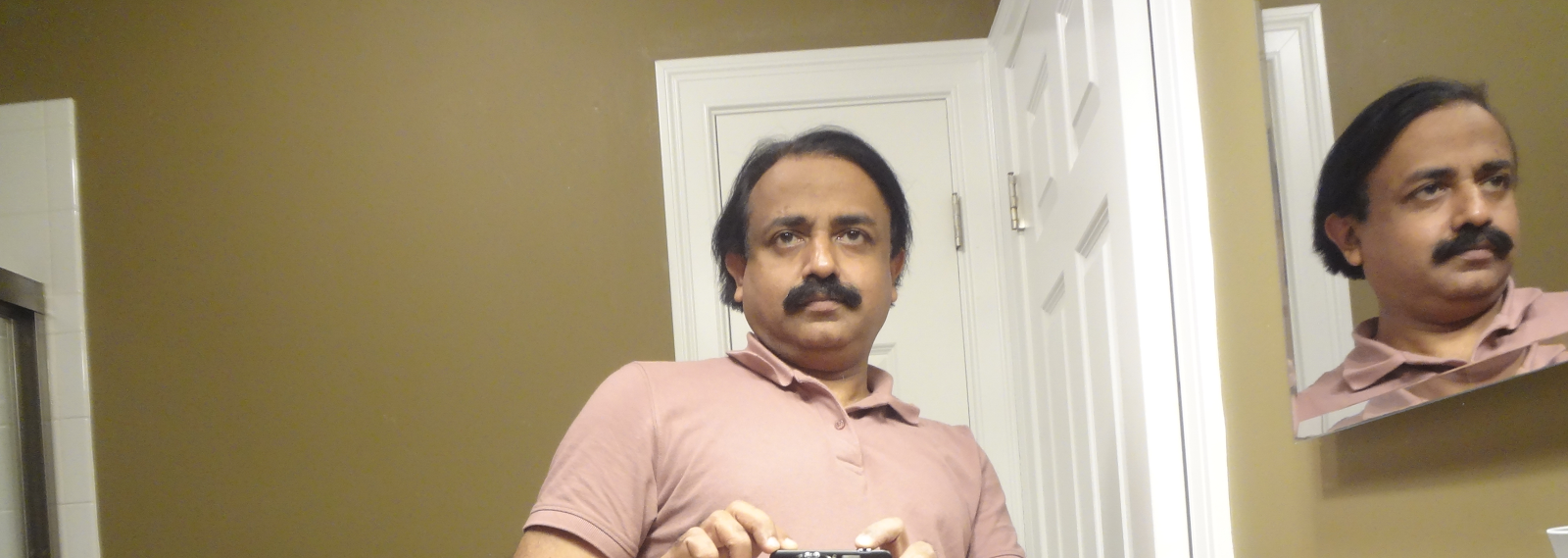The article on CSR as Consumer Social Responsibility (ET, 30th March 2010), by Nitish Kumar of XIMB did not make any sense to me. So I wrote a response to ET as below; Hope they will publish it or else.....
CSR through sensible market intervention rather than consumers
This is a response to Nitish Kumar’s article in the POLICY page on CSR as consumer social responsibility. (ET, Tuesday 30th March, 2010.)
The debate on whether it is possible for a bottom up approach from consumer awareness and choices to social responsibility postulates that the consumer’s informed freedom of choice would lead to CSR. Nothing could be farther from the truth. First of all the price sensitivity of the Indian consumer has not been considered, although it is implied in the consumer’s preferences for cheap Chinese products.
The consumer in a developed economy is different from that of a developing one. Besides, the ‘consumer’ is an amorphous term. There is not a single entity called the Indian consumer to be called as such. In a more developed economy such as that of the US, because of the presence of consumer activists such as Ralph Nader there can be concerted efforts from the consumers side , but the Indian consumer is still unorganized.
Therefore educating consumer would call for the question, which consumer? If the answer is ‘everyone’ is it possible to educate everyone where the author himself has suggested that the government has failed?
On the other hand, business houses are more concrete and numerable. However the article implies that it is unlikely that the business houses would take responsibility for pollution or CSR. That is why an alternate idea of consumer as CSR in the first place.
That the consumer would be able to determine the CSR or pollution control by his freedom of choice is counter to experience since the matter is age old and is the first text book reference to negative externalities such as pollution as examples of how the market mechanism itself fails in certain cases.
Coming back to the Indian consumer he is still not willing to pay more or demand for environmental performance or CSR in his choice of products or purchase decisions, leave alone thinking about ultimate prices they pay. The Indian consumer is worried more about how affordable something is.
Given the above, that is, consumer not ready and the corporate not expected, then the only way to mitigate the negative is by diktats and law enforcement. However, that can also be not expected as the article says the government has failed in its functions.
However, there are ways in which the government can induce the consumer to prefer and the corporate to invest in less polluting technologies. One such method is by removing subsidies, for instance, on oil, if not all on a sudden but in a phased manner. When oil prices are left to be market determined, their prices are sure to find market equilibrium at a higher level than the present one.
This would trigger efforts at alternate energy. The relative cost of the alternate energy comes down and eventually becomes less than the oil prices as volumes reduce unit costs. There will be a time when using polluting oil would be costlier than using non polluting alternatives. The only factor that makes oil attractive presently is the subsidies on oil at the cost of the taxpayer.
For the CSR or Environmental responsibility an economy hopes to achieve by consumer freedom of choice, the consumer should first be given a choice. The government should divert the subsidies on unclean technology such as on oil and its derivatives to the cleaner alternatives. By doing so, the consumers , the producers and the society at large benefits.
Merely hoping consumers would take up CSR and business would educate consumers would remain exactly what it is ; Hope!
Author details : Shelly Jose, Teaches Environmental Management and Business Ethics at Rajagiri Centre for Business Studies, Kochi.
Tuesday, March 30, 2010
Thursday, March 18, 2010
A paper on popularisation of Management

In 2002 while I was doing the FDP at IIM Ahmedabad, professor M.R. Dixit had given an assignment on the 'Future of Management'. The predominant schema in my mind at that time revolved around the ideas of Management, bottom of the pyramid, culture and the peculiarity of Kerala economically, socially, environmentally and demographically.
The same was reflected in the paper. Here is the paper in an article form..
Emerging organisations and popularization of Management as a discipline; the case for a Kerala model of tourism
Shelly Jose
Abstract
The following paper postulates that the forces of egalitarianism are inevitable due to the forces of technology and globalization, which will necessitate a revamp of the hierarchical business model of today. This will have behavioral and societal consequences. A grounded, community-based business model based on the peculiarities of Kerala as a geographic and social entity distinct from other regions of India is a logical extension of the same argument.
Introduction
The two dominant paradigms that distinguish our age is the explosion and ubiquity of information made possible by the leaps in information technology and the movement towards globalization. With this in mind, the following future scenario of management as a dynamic component that changes to adapt to the times (in no small measure created by Management itself with its bias towards action and development) is discussed. A context for such application and integration of ‘Management’ at an egalitarian, grass root level is illustrated in the background of Kerala’s potential as a tourism destination.
Changes in organisations due to greater need for focus
As more and more differentiation takes place due to need for focus, there will be more and more specialized organizations. Due to the forces unleashed by liberalization, Indian organizations also are likely to move towards further specialization. For instance there is likelihood of more and more organizations emerging purely for research and development. More and more R&D will be outsourced even in the social sciences. Already some like Marketing Research do exist. In the social sciences, there is likely more and more institutions doing theoretical research, much like the physical and natural sciences. The action research will take stimuli from theoretical research and work on. So the differentiation will be for example, in terms of traditional organizations, action research organizations and theoretical research organizations.
In essence, this reflects a tendency towards subcontracting of major operations as well. However, since reliability is a major issue even subcontract organizations will need to establish credentials in terms of high levels of integrity and efficiency. This requires highly specialized management practitioners and practices in the research field. The maintenance and certification of standards will be a major offshoot of this development which will be another knowledge based managerial domain. More importantly the importance of such developments indicates the movement of ‘Management’ as a discipline to more grassroots and specialist levels.
The key managerial adaptation for the subcontract organizations will be of knowledge / idea acquisition, classification, and transmission all for more and more specific kinds of industries and purposes and the building up of necessary credibility.
Abstract
The following paper postulates that the forces of egalitarianism are inevitable due to the forces of technology and globalization, which will necessitate a revamp of the hierarchical business model of today. This will have behavioral and societal consequences. A grounded, community-based business model based on the peculiarities of Kerala as a geographic and social entity distinct from other regions of India is a logical extension of the same argument.
Introduction
The two dominant paradigms that distinguish our age is the explosion and ubiquity of information made possible by the leaps in information technology and the movement towards globalization. With this in mind, the following future scenario of management as a dynamic component that changes to adapt to the times (in no small measure created by Management itself with its bias towards action and development) is discussed. A context for such application and integration of ‘Management’ at an egalitarian, grass root level is illustrated in the background of Kerala’s potential as a tourism destination.
Changes in organisations due to greater need for focus
As more and more differentiation takes place due to need for focus, there will be more and more specialized organizations. Due to the forces unleashed by liberalization, Indian organizations also are likely to move towards further specialization. For instance there is likelihood of more and more organizations emerging purely for research and development. More and more R&D will be outsourced even in the social sciences. Already some like Marketing Research do exist. In the social sciences, there is likely more and more institutions doing theoretical research, much like the physical and natural sciences. The action research will take stimuli from theoretical research and work on. So the differentiation will be for example, in terms of traditional organizations, action research organizations and theoretical research organizations.
In essence, this reflects a tendency towards subcontracting of major operations as well. However, since reliability is a major issue even subcontract organizations will need to establish credentials in terms of high levels of integrity and efficiency. This requires highly specialized management practitioners and practices in the research field. The maintenance and certification of standards will be a major offshoot of this development which will be another knowledge based managerial domain. More importantly the importance of such developments indicates the movement of ‘Management’ as a discipline to more grassroots and specialist levels.
The key managerial adaptation for the subcontract organizations will be of knowledge / idea acquisition, classification, and transmission all for more and more specific kinds of industries and purposes and the building up of necessary credibility.
Changes in organisations to IT revolution
Due to the maturity of information technology and its wide dissemination, as more and more functions become amenable to be outsourced from people working from their homes, amenability being the digitization, transmission and security of documents, all through advances in the software technology, the future role of some managers will be that of managing and co-ordinating these SOHO (Small office home office) operators perhaps from their own SOHOs. Once again, SOHOs will have to establish their credentials in terms of integrity and efficiency. In this we will be creating a new breed of contract SOHOs, the commitment of whom will be of the order of buying into the values and practices espoused by the companies just as the customers are loyal to the quality of products that these companies offer. As the SOHO employee will enjoy much more autonomy and is much less in degree a member of the organization, retaining him will require a different order of talent. It is likely that organisations will not be vying for talented employees but credible autonomous SOHO employees.
As the SOHO employee is free to take on assignments from multiple sources there is a likelihood of pervasive permissiveness. The anguishes of the market economy such as lay off and retrenchment will be of a lesser nature as the SOHO employee is less likely fully out of job. This is a pleasant scenario, in a way prompting many to become SOHO entrepreneur employees. As companies come and go, disintegrate and reconfigure endlessly, the SOHO will remain as the centre around which activities arrange themselves. Society will arrange itself in a new kind of egalitarianism. A fluid ambience convenient to all the players will be the likely order. In fact this will be a new kind of situation where the freedom provided by the fluidity, the freedom to come in and go the freedom to make a mark and move on will outweigh the security provided by lifelong employment.
Managerial talent of big organisations surrounded by SOHOs would be of a kind much in the same way of developing and maintaining relationship with a back up list of vendors, suppliers and contractors.
Changes in Power distance
As more and more of these needs are taken care of by smaller and smaller organizations, the society’s notions of status as in the traditional hierarchical organizations will also acquire new meanings. When everybody interacts in an increasingly less face to face manner, society will once again shed its power distance to take an egalitarian shape.
Those individuals who are unable to comprehend the change of power distance that they ostensibly kept to keep themselves in the upper dog’s position will feel alienated. This would be a new order of alienation, an alienation of the upper dog. As a high power distance society grapple with the alienation of the upper dog more social innovations may be required to counter these.
As access to information becomes more and more pervasive in the form of more number of TVs and other mass and individualized communications, the traditional divisions are likely to wither away. As at a younger age a child born for instance in lesser circumstances watches more and more egalitarian interactions (not to forget the others conscious efforts by society at removing differences) they are likely to discard many of the attempts at the reinforcements of inequality. Same is true for the child in better circumstances whose acculturation takes place in large measure with the public media, as he will be able to see the less fortunate one child in more egalitarian terms. In a way what social change was warranted to be achieved by other means would be achieved by the almost automatic and ubiquitous information provided by the information age driven paradoxically by the profit motivated market forces.
Another reason for the emerging egalitarianism is that unlike in previous eras the increase in wealth of the well to do is accompanied by an increase in the wealth of the lower strata as well.
The Implications for organizations is that the inculcation of the egalitarian awareness will force the next generation to be more and more networked / flat and less hierarchical.
An Indian Management Service than an Indian Administrative Service
As Dr. C.K. Prahalad says, all the Indian successes have a similar pattern. They all relied on state of the art technologies, used different non- western business models and the leaders knew the businesses (read they were not bureaucrats). Examples are operation flood, green revolution and the DOT. In all these cases the solution to the problem of poverty itself was the new opportunity. What it means is the taking over of the Indian Management by the non- bureaucratic business managers. An Indian Management Service (IMS) on the lines of the IAS could supplement the IAS where specialist –generalists ( jack of all trades and master of one) could be produced on the lines of a rapid action force (but with a bias for consistent, intensive action) from among the existing and also non-traditional managerial pool. Any lack of knowledge of the business will be punished by the market economy in its natural function.
An alternative business model in the tourism sector for Kerala.
More sectors would try to duplicate the successes of the type of DOT and operation flood. One possible example is postulated below. What is likely to emerge is a Community tourism model for the state of Kerala in lines with the Anand experience. In a socially progressive, but economically backward state like Kerala, the special combination of stabilization of population at replacement level, education, almost total investment in built up domestic dwelling, information backbone and tapping possibility due to its north south orientation, above average transportation facilities and communication facilities and high literacy would help open up newer models of tourism. The high population density and the string of small town pattern, which renders distances smaller than in other states do also make the model a viable one.
The ‘National Geographic traveler’ has listed Kerala in 1999 as one of the must see destinations of a lifetime. The interesting feature is that the only other place in India featuring in the list was Taj Mahal which is only a monument compared to the whole of Kerala so many square kms of it.
By extending the logic, by simply building quality roads, Kerala can be initiated into village and ecological tourism by the community approach at considerable cheaper rates to the tourist. All that is needed further is a home stay model accommodation in existing farm houses and other houses in scenic ambience. This would bring about a grass root level revolution with grass root beneficiaries in much the same way as Anand. The fact that the potential is enhanced by the traditional cash crops like rubber plantations and the natural beauty of the state provides a natural advantage to Kerala. This brings us to a new need in the academia namely ‘Tourism management’ for households.
Tourism Management for households
The managerial talent in this instance needs to be extended to every household, which would be a great experiment in popularization of management skills perhaps for the first time in the history of the world. Among the many other firsts to Kerala this could be an additional one. The present advances in social indicators can thus be very conveniently tapped in the tourism business at a very low investment.
This would mean that guides chosen from the villages shall have to be trained in language, local customs, flora and fauna to be explained to the tourist. The other facilities of near ubiquitous transportation access to telephone are already at a higher density and quality than the rest of the states. This combination makes Kerala a unique place for such an experimentation. The model also will be easy on the need for more hotel accommodation. The western tourists are out on an escape trip from the luxuries they are so used to. There is very little justification for providing opulent luxury in five star hotels here. Rather the village/ecological/exotic household culture ambience is the product that needs to be packaged. In a flash, there is no difficulty in seeing that the solution to the problem (of unemployment, low returns from land) is itself the business opportunity.
It is relevant to mention that the subject calls for both the inputs from the domain of tourism as also from that of management especially human resource, logistics, operations, public relations and household management. A great deal of emphasis can be given to the behavioural and personality development and cross cultural sensitivity.
A first line of action could be the training of willing youth from the countryside to be host-guides to foreigners. This could also double up as a valuable addition to the Human Resource Development of the nation besides generating valuable foreign exchange.
The objective is to further strengthen the position of Kerala as a world class destination. A look at the world map indicating the prevalence of homestay concept shows that the concept is though well entrenched in the rest of the world, the most frequent reference are to Thailand and Cuba. However adequate precautions need to be taken for avoiding the pitfalls of their experiences.
As can be observed, the model is made all the more possible by the advances in information technology, the increasing globalization and the social and economic peculiarities of Kerala. Similar indigenous business models can be explored in other states suiting the local conditions. In all cases what is predicted is more egalitarianism and grass root level popularization of ‘Management’ at the rural household level as a new model of home ‘office’ for national product generation itself. This serves some of the qualifying characteristics of 21st century business such as world citizens serving both local communities and global society, commitment to continuous learning and models of environmental sustainability.
References
Gladwell, Malcolm, (2002) The tipping point How little things can make a big difference, Black Bay books.
Jaiswal A. K, Fortune at the bottom of the pyramid, An alternative perspective. WP No 2007-7-13 doc id. http://www.iimahd.ernet.in/publications/data/2007-07-13Jaiswal.pdf
Maynard, Herman Bryant and Mehrtens, Susan E , Fourth Wave: Business in the 21st Century Berret Koehler Publishers Inc. CA
Website : http://www.homestayweb.com/.
------------------
Due to the maturity of information technology and its wide dissemination, as more and more functions become amenable to be outsourced from people working from their homes, amenability being the digitization, transmission and security of documents, all through advances in the software technology, the future role of some managers will be that of managing and co-ordinating these SOHO (Small office home office) operators perhaps from their own SOHOs. Once again, SOHOs will have to establish their credentials in terms of integrity and efficiency. In this we will be creating a new breed of contract SOHOs, the commitment of whom will be of the order of buying into the values and practices espoused by the companies just as the customers are loyal to the quality of products that these companies offer. As the SOHO employee will enjoy much more autonomy and is much less in degree a member of the organization, retaining him will require a different order of talent. It is likely that organisations will not be vying for talented employees but credible autonomous SOHO employees.
As the SOHO employee is free to take on assignments from multiple sources there is a likelihood of pervasive permissiveness. The anguishes of the market economy such as lay off and retrenchment will be of a lesser nature as the SOHO employee is less likely fully out of job. This is a pleasant scenario, in a way prompting many to become SOHO entrepreneur employees. As companies come and go, disintegrate and reconfigure endlessly, the SOHO will remain as the centre around which activities arrange themselves. Society will arrange itself in a new kind of egalitarianism. A fluid ambience convenient to all the players will be the likely order. In fact this will be a new kind of situation where the freedom provided by the fluidity, the freedom to come in and go the freedom to make a mark and move on will outweigh the security provided by lifelong employment.
Managerial talent of big organisations surrounded by SOHOs would be of a kind much in the same way of developing and maintaining relationship with a back up list of vendors, suppliers and contractors.
Changes in Power distance
As more and more of these needs are taken care of by smaller and smaller organizations, the society’s notions of status as in the traditional hierarchical organizations will also acquire new meanings. When everybody interacts in an increasingly less face to face manner, society will once again shed its power distance to take an egalitarian shape.
Those individuals who are unable to comprehend the change of power distance that they ostensibly kept to keep themselves in the upper dog’s position will feel alienated. This would be a new order of alienation, an alienation of the upper dog. As a high power distance society grapple with the alienation of the upper dog more social innovations may be required to counter these.
As access to information becomes more and more pervasive in the form of more number of TVs and other mass and individualized communications, the traditional divisions are likely to wither away. As at a younger age a child born for instance in lesser circumstances watches more and more egalitarian interactions (not to forget the others conscious efforts by society at removing differences) they are likely to discard many of the attempts at the reinforcements of inequality. Same is true for the child in better circumstances whose acculturation takes place in large measure with the public media, as he will be able to see the less fortunate one child in more egalitarian terms. In a way what social change was warranted to be achieved by other means would be achieved by the almost automatic and ubiquitous information provided by the information age driven paradoxically by the profit motivated market forces.
Another reason for the emerging egalitarianism is that unlike in previous eras the increase in wealth of the well to do is accompanied by an increase in the wealth of the lower strata as well.
The Implications for organizations is that the inculcation of the egalitarian awareness will force the next generation to be more and more networked / flat and less hierarchical.
An Indian Management Service than an Indian Administrative Service
As Dr. C.K. Prahalad says, all the Indian successes have a similar pattern. They all relied on state of the art technologies, used different non- western business models and the leaders knew the businesses (read they were not bureaucrats). Examples are operation flood, green revolution and the DOT. In all these cases the solution to the problem of poverty itself was the new opportunity. What it means is the taking over of the Indian Management by the non- bureaucratic business managers. An Indian Management Service (IMS) on the lines of the IAS could supplement the IAS where specialist –generalists ( jack of all trades and master of one) could be produced on the lines of a rapid action force (but with a bias for consistent, intensive action) from among the existing and also non-traditional managerial pool. Any lack of knowledge of the business will be punished by the market economy in its natural function.
An alternative business model in the tourism sector for Kerala.
More sectors would try to duplicate the successes of the type of DOT and operation flood. One possible example is postulated below. What is likely to emerge is a Community tourism model for the state of Kerala in lines with the Anand experience. In a socially progressive, but economically backward state like Kerala, the special combination of stabilization of population at replacement level, education, almost total investment in built up domestic dwelling, information backbone and tapping possibility due to its north south orientation, above average transportation facilities and communication facilities and high literacy would help open up newer models of tourism. The high population density and the string of small town pattern, which renders distances smaller than in other states do also make the model a viable one.
The ‘National Geographic traveler’ has listed Kerala in 1999 as one of the must see destinations of a lifetime. The interesting feature is that the only other place in India featuring in the list was Taj Mahal which is only a monument compared to the whole of Kerala so many square kms of it.
By extending the logic, by simply building quality roads, Kerala can be initiated into village and ecological tourism by the community approach at considerable cheaper rates to the tourist. All that is needed further is a home stay model accommodation in existing farm houses and other houses in scenic ambience. This would bring about a grass root level revolution with grass root beneficiaries in much the same way as Anand. The fact that the potential is enhanced by the traditional cash crops like rubber plantations and the natural beauty of the state provides a natural advantage to Kerala. This brings us to a new need in the academia namely ‘Tourism management’ for households.
Tourism Management for households
The managerial talent in this instance needs to be extended to every household, which would be a great experiment in popularization of management skills perhaps for the first time in the history of the world. Among the many other firsts to Kerala this could be an additional one. The present advances in social indicators can thus be very conveniently tapped in the tourism business at a very low investment.
This would mean that guides chosen from the villages shall have to be trained in language, local customs, flora and fauna to be explained to the tourist. The other facilities of near ubiquitous transportation access to telephone are already at a higher density and quality than the rest of the states. This combination makes Kerala a unique place for such an experimentation. The model also will be easy on the need for more hotel accommodation. The western tourists are out on an escape trip from the luxuries they are so used to. There is very little justification for providing opulent luxury in five star hotels here. Rather the village/ecological/exotic household culture ambience is the product that needs to be packaged. In a flash, there is no difficulty in seeing that the solution to the problem (of unemployment, low returns from land) is itself the business opportunity.
It is relevant to mention that the subject calls for both the inputs from the domain of tourism as also from that of management especially human resource, logistics, operations, public relations and household management. A great deal of emphasis can be given to the behavioural and personality development and cross cultural sensitivity.
A first line of action could be the training of willing youth from the countryside to be host-guides to foreigners. This could also double up as a valuable addition to the Human Resource Development of the nation besides generating valuable foreign exchange.
The objective is to further strengthen the position of Kerala as a world class destination. A look at the world map indicating the prevalence of homestay concept shows that the concept is though well entrenched in the rest of the world, the most frequent reference are to Thailand and Cuba. However adequate precautions need to be taken for avoiding the pitfalls of their experiences.
As can be observed, the model is made all the more possible by the advances in information technology, the increasing globalization and the social and economic peculiarities of Kerala. Similar indigenous business models can be explored in other states suiting the local conditions. In all cases what is predicted is more egalitarianism and grass root level popularization of ‘Management’ at the rural household level as a new model of home ‘office’ for national product generation itself. This serves some of the qualifying characteristics of 21st century business such as world citizens serving both local communities and global society, commitment to continuous learning and models of environmental sustainability.
References
Gladwell, Malcolm, (2002) The tipping point How little things can make a big difference, Black Bay books.
Jaiswal A. K, Fortune at the bottom of the pyramid, An alternative perspective. WP No 2007-7-13 doc id. http://www.iimahd.ernet.in/publications/data/2007-07-13Jaiswal.pdf
Maynard, Herman Bryant and Mehrtens, Susan E , Fourth Wave: Business in the 21st Century Berret Koehler Publishers Inc. CA
Website : http://www.homestayweb.com/.
------------------
Subscribe to:
Posts (Atom)











